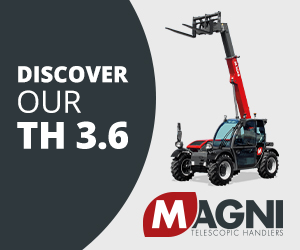Customers Drive Design of New Link-Belt 90-ton RT Crane
Positioned between the 75- and 100-ton units, Link-Belt Construction Equipment Co.'s new RTC-8090 series II is a 90-ton rough terrain crane that features a new boom design and heightened lifting capacities. Introduced to customers at Cranefest '06 in Lexington, Ky., the bulked-up muscle and trimmed-down transportability of the RTC-8090 came in response to the vocal needs of Link-Belt's customers. Link-Belt also unveiled an 80-ton version of the same crane, the RTC 8080-Series II, marketed to specific states with more stringent labor requirements for cranes rated above 80 tons
Link-Belt's belief in the market for this size crane spurred production of the RTC-8090, says Rick Curnutte, Link-Belt's product manager for Telescopic Cranes. But, he says, customer input “absolutely” drove the crane's design: “In this day and age, how else can you realistically do it? The voice of the customer is essential to every design project.”

Making a new application of boom design
An RT crane first, Link-Belt engineered its patented locking and latching systems into the 38- to 140-foot, five-section boom. Using a single hydraulic cylinder, the five boom sections move one at a time, which eliminates lift chart deducts for telescoping a load.
“Customers don't want to hassle with a separate capacity chart when the boom needs to be extended or retracted; this is especially true with rough-terrain cranes,” explains Curnutte. “This style of boom is lighter, which means lighter overall transport weight, and it also produces excellent capacities.”
The RTC-8090 has a maximum tip height of 238 feet with two additional 16-foot lattice inserts, installed between the boom head and the optional 35- to 58-foot bi-folding lattice. All attachment combinations have offset positions of 2, 15, 30, and 45.
Modular counterweights have been segmented to meet various transportation restrictions across North America. The boom/ counterweight configuration helps reduce the RT's transport weight to under 90,000 pounds.

Keeping operators comfortable
Visibility at high boom angles has been increased in the design of the galvaneal operator's cab with its curved front window glass. The operator's comfort and productivity levels have been heightened with a six-way adjustable seat matched to the controls. All gauges and switches, backlit for low-light operation, are in the operator's forward line of sight.

Powering up
The RTC-8090 is powered by a 225-hp Caterpillar C6.6 engine, is equipped with a direct-mount Spicer powershift transmission, and has six forward and six reverse speeds. A cablocated switch controls four steering modes: two-wheel front, two-wheel rear, four-wheel and crab. The crane is engineered with an automotive style, four-link suspension, and Link-Belt's patented Hydro-gas Ride suspension is an option. Its charged accumulator serves as a shock absorber improving carrier stability.
“Four-link suspension on the rear axle reduces bounce that plagues conventional RT chassis,” says Curnutte. “The optional patented Hydro-Gas Ride� system provides a smooth ride at top speed • a first in North American rough-terrain crane design.”
For more information visit http://www.link-belt.com.











